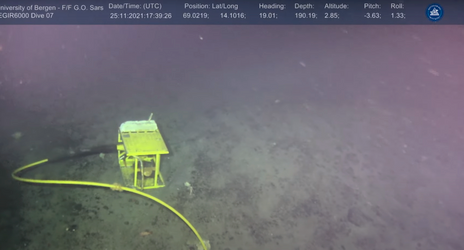
Cuba’s recent protests, explained.
“Patria y vida!” (“homeland and life”) is the slogan of the rare and massive protests that erupted across Cuba over the weekend. It’s a riff on the “patria o muerte” (homeland or death) slogan of the Cuban Revolution — and the lyrics of a popular rap song compiled by Afro Cuban hip-hop artists in Cuba in collaboration with artists in the US.
They are part of the San Isidro Movement, a collective of artists, musicians, writers, performers, academics, and others activists who have pushed for greater freedom under the Cuban regime. Their activism has helped create space for the recent historic protests.
Tanya Saunders, an associate professor in the Center for Latin American Studies at the University of Florida, told me that Black activism on the island, including in the underground hip-hop scene in the 1990s, influenced these dissidents, who formed their collective in 2018. They did so to fight Decree 349, an edict from the Cuban government that said artists needed approval from the Ministry of Culture for their performances or public works.
In November 2020, Cuban security forces reportedly raided the headquarters of the movement after some of its members protested the jailing of another Cuban rapper. In response, some went on a hunger strike, and staged a protest outside the Ministry of Culture, at that time considered one of the largest peaceful demonstrations in decades.
The Cuban government initially said it would engage the artists in a dialogue, only to backtrack on that promise. But the movement kept pushing, continuing its very public resistance against the Cuban regime.
Those protests — and the work of those in the San Isidro Movement — also gained notoriety online, especially through social media. Cuba has eased internet restrictions in recent years to allow for more access, which helped spread not just the art but also the political message. The “Patria y Vida” song was released early this year.
“There was just a matter of time before the whole thing exploded because the artists have their pulse on the feeling of the people,” Saunders said.
The pulse of the people is one of desperation, driven by anger over the economic crisis, Cuba’s worst in more than three decades. On Sunday, that desperation erupted into protests — what Michael Bustamante, a professor of Latin American history at Florida International University, called a “cathartic expression of frustration.”
Why are the protests in Cuba happening now?
Cuba is currently experiencing food and medicine shortages and power outages echoing the worst of the post-Soviet crisis in the 1990s, when the breakup of the Soviet Union left Cuba without its main benefactor. That pushed the economy into free fall and sparked a migration crisis, when then-Cuban leader Fidel Castro opened up the borders and allowed thousands to flee by sea to the United States.
Cuba’s current emergency, though, is the kind of thing that’s been brewing for some time.
“The long-term cause is a dictatorial system where there’s a very weak economy where you have basically no hope of improving one’s material or social condition anytime soon,” said Yvon Grenier, professor of political science at St. Francis Xavier University in Nova Scotia. “The youth are particularly unhappy.”
The Cuban regime has fallen short on implementing necessary economic reforms for years, and some of the reforms they have taken, including a currency reform earlier this year, had the effect of driving up prices of everyday goods, like food, and this when Cubans were already facing shortages and pandemic-related pain.
Cuba imports about 70 percent of its food, and rising global food costs, especially during Covid-19, are restraining its buying power. Cuba has also traditionally depended on left-leaning countries like Venezuela, but Venezuela’s own collapse has trickled down to Cuba, especially when it comes to the country’s supply of cheap fuel.
Trump-era sanctions have added to the economic woes. In 2014, then-President Barack Obama engaged in a historic diplomatic opening with Cuba, and as a result, rolled back some economic restrictions tied to the Cold War-era US embargo and opened up travel.
Trump, as president, vowed to reverse those policies. He did so throughout his time in office, significantly stepping up the pressure in the second half of his term, including with renewed travel restrictions and other sanctions, including designating Cuba as a “state sponsor of terror” in his final days in office. A key pillar of Trump’s sanctions limited remittances to the island, which cut off another economic spigot.
And then there’s the pandemic. Cuba is facing a serious coronavirus spike, seeing a record-high 5,000 daily cases and about 47 deaths just as the protests took shape. Cuba, like other parts of the world, is struggling to vaccinate its people — though unlike many other countries, Cuba actually developed its own coronavirus vaccines, at least one of which the government says is highly effective.
There are a few catches, though. One is Cuba’s vaccine, Abdala, requires three doses, which takes more time, manpower, and materials — specifically a lot more syringes to just administer these doses. Cuba is struggling to purchase those, and there are efforts to help raise money to buy syringes for Cuba.
And the longer the pandemic continues, the longer it will take for Cuba’s one economic lifeline — tourism — to bounce back. All of this, experts said, boiled over into the protests that Cuba saw on Sunday, which social media, and access to it, likely helped spread. (Though the Cuban government quickly moved to shut down the internet in the country.)
But the cries of “patria y vida” from the protesters, and the artists who helped give rise to it, also speak to larger undercurrents of frustration around Cuba’s system. As experts pointed out, in an authoritarian country, challenging the government comes with very real risks. The economic frustrations and pandemic fatigue are intimately connected with Cuba’s politics.
As Saunders said, the food shortages on top of the tightened embargo on top of the government’s failure to make meaningful economic or political policy changes on top of the heat all piled together. “People are just: enough,” Saunders said.





